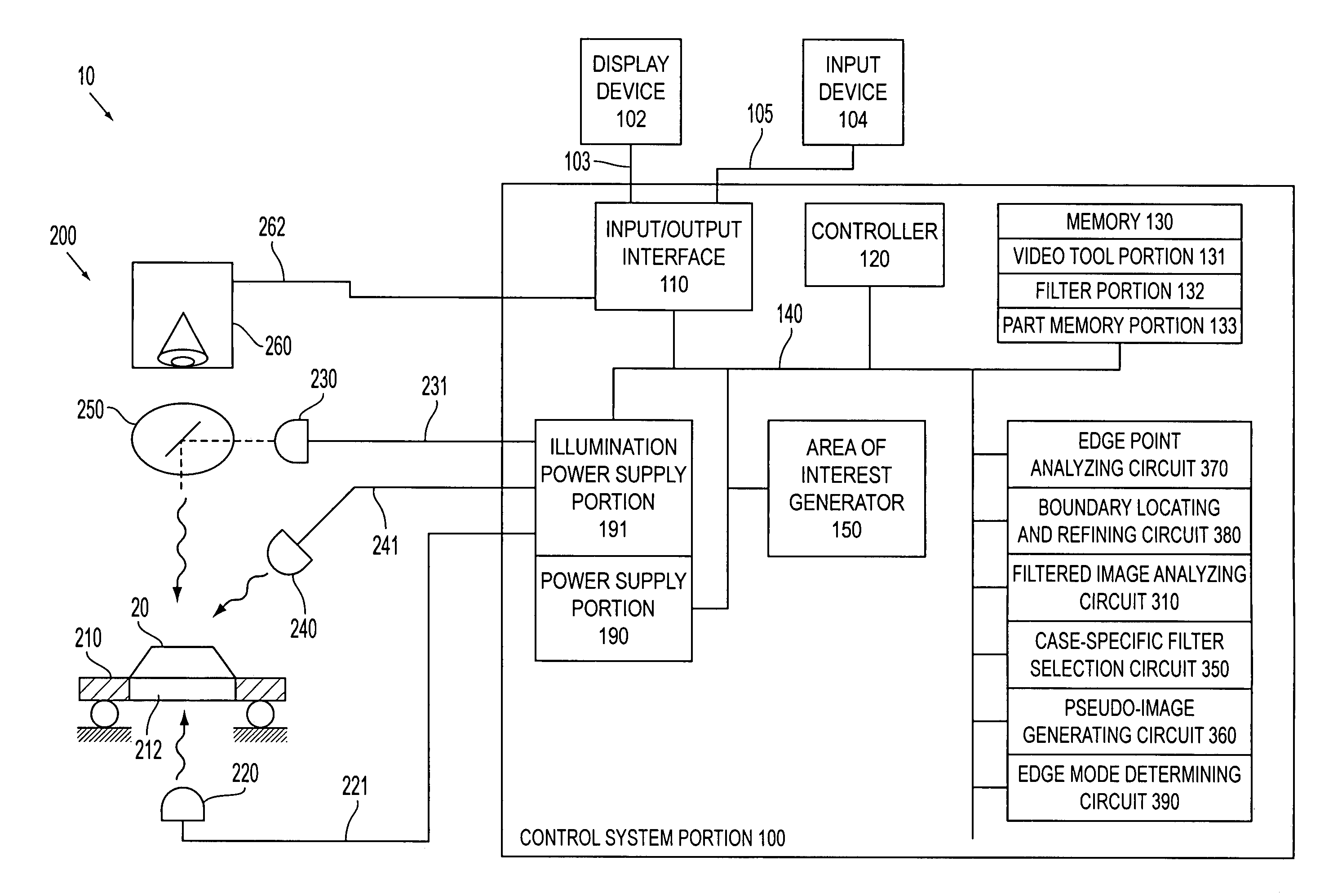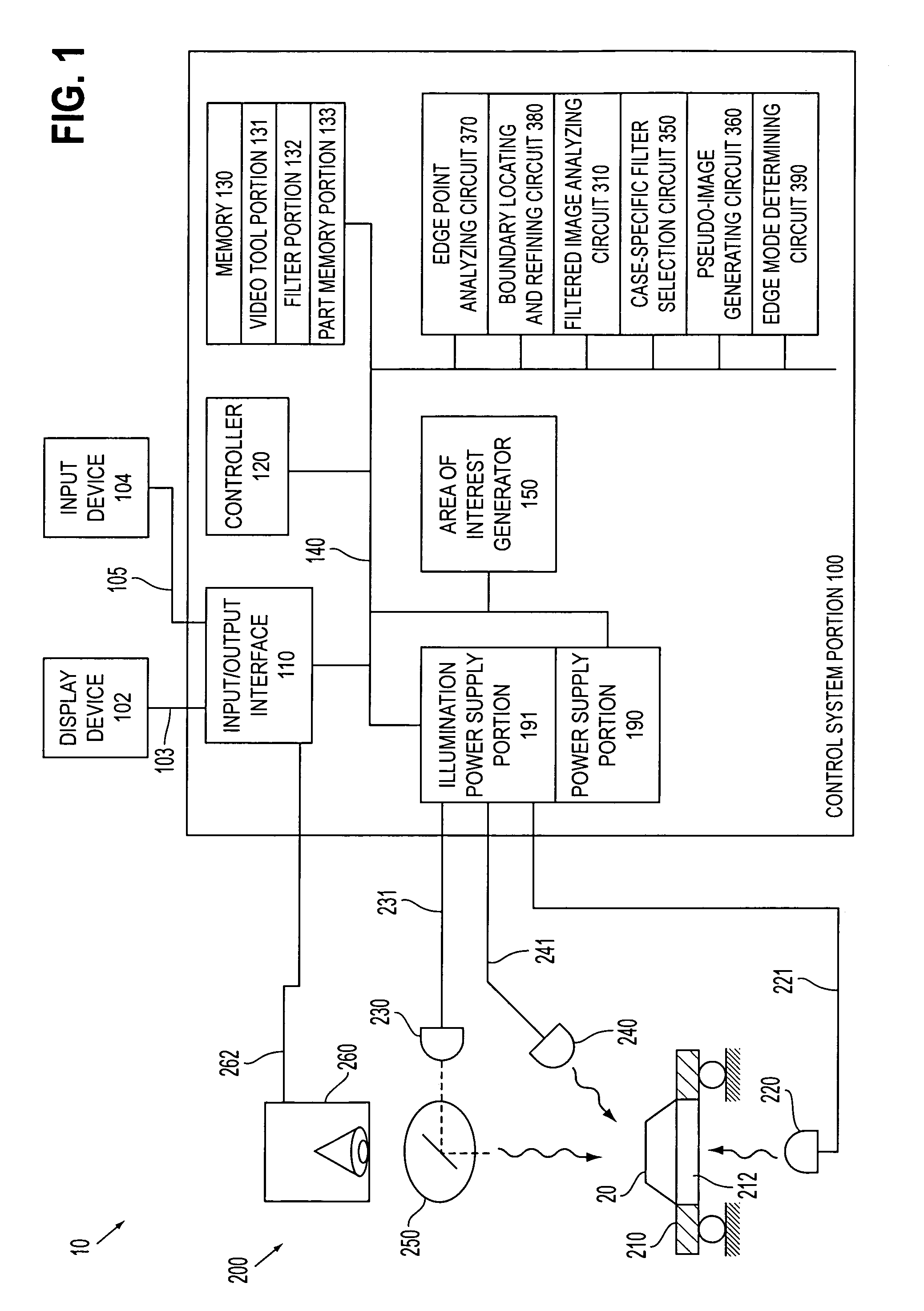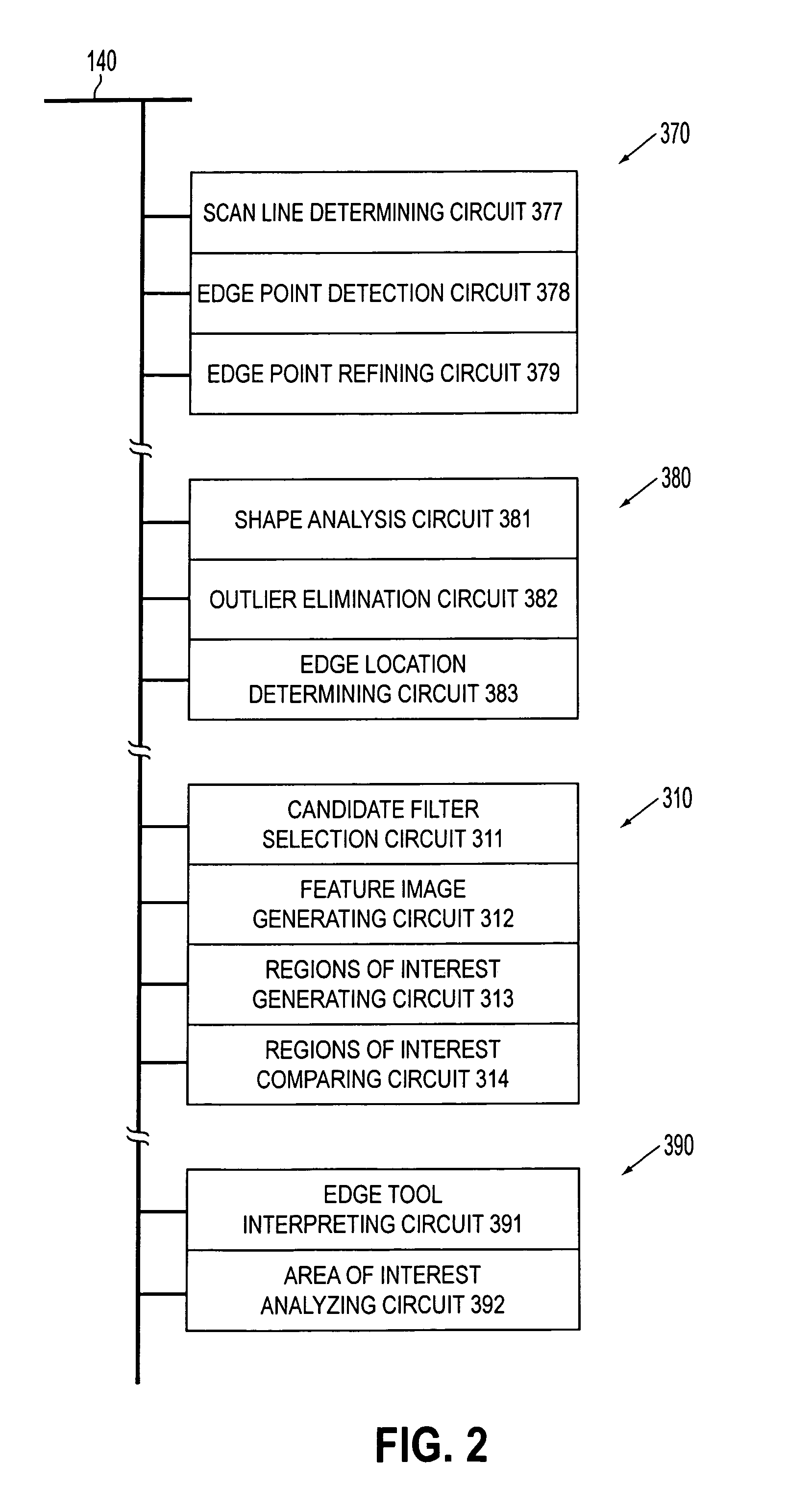Systems and methods for boundary detection in images
a technology of image boundary and detection method, applied in image enhancement, image data processing, instruments, etc., can solve the problems of inability to integrate methods with methods, methods have not been supported by simple user interfaces or compatible “edge tools”, and methods have not been well-developed for finding relatively precise positions. , to achieve the effect of accurately locating an edge position, easy integration, and convenient integration
- Summary
- Abstract
- Description
- Claims
- Application Information
AI Technical Summary
Benefits of technology
Problems solved by technology
Method used
Image
Examples
Embodiment Construction
[0043]The systems and methods of this invention can be used in conjunction with the machine vision systems and / or the lighting calibration systems and methods disclosed in U.S. Pat. No. 6,239,554 B1, which is incorporated herein by reference in its entirety.
[0044]With regard to the terms “boundaries” and “edges” as used herein, the terms “boundaries” and “edges” are generally used interchangeably with respect to the scope and operations of the systems and methods of this invention. However, when the context clearly dictates, the term “edge” may further imply the edge at a discontinuity between different surface planes on an object and / or the image of that object. Similarly, the term “boundary” may further imply the boundary at a discontinuity between two textures, two colors, or two other relatively homogeneous surface properties, on a relatively planar surface of an object, and / or the image of that object.
[0045]For simplicity and clarification, the operating principles and design f...
PUM
 Login to View More
Login to View More Abstract
Description
Claims
Application Information
 Login to View More
Login to View More - R&D
- Intellectual Property
- Life Sciences
- Materials
- Tech Scout
- Unparalleled Data Quality
- Higher Quality Content
- 60% Fewer Hallucinations
Browse by: Latest US Patents, China's latest patents, Technical Efficacy Thesaurus, Application Domain, Technology Topic, Popular Technical Reports.
© 2025 PatSnap. All rights reserved.Legal|Privacy policy|Modern Slavery Act Transparency Statement|Sitemap|About US| Contact US: help@patsnap.com



